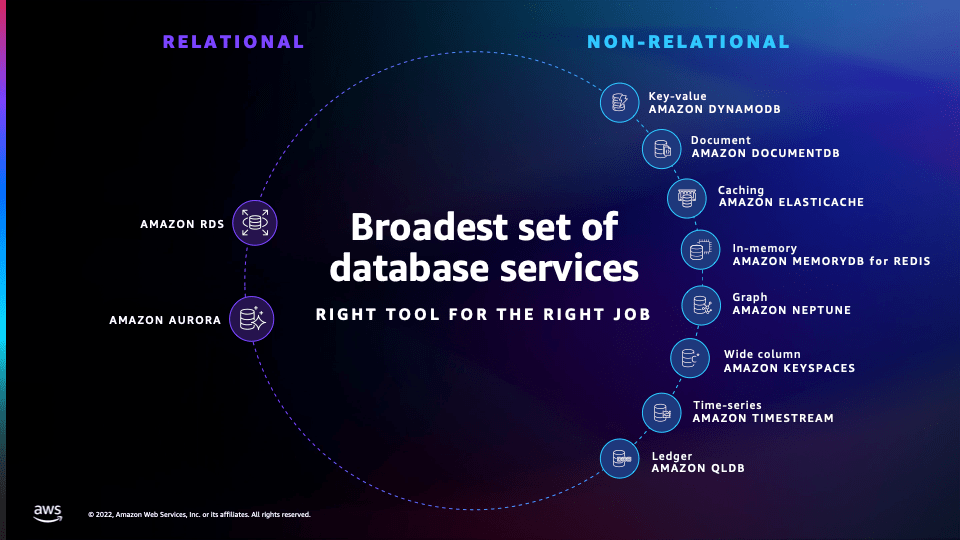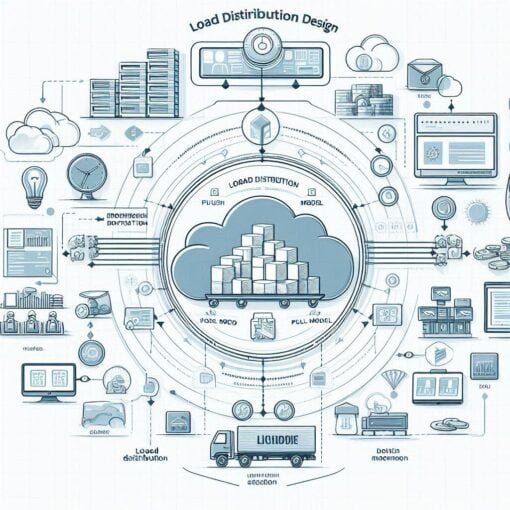
Choosing the Right Database on Amazon AWS
Selecting the appropriate database for your applications can significantly impact performance, scalability, and overall success. Amazon Web Services (AWS) offers a range of database solutions, each tailored to specific use cases. This guide will help you navigate the options and choose the best database for your needs.
Types of Databases on AWS
AWS provides several types of databases, each with unique features and benefits:
- Relational Databases (RDBMS)
- Amazon RDS (Relational Database Service): Supports multiple database engines including MySQL, PostgreSQL, MariaDB, Oracle, and SQL Server. Ideal for transactional applications, it offers automated backups, software patching, and scaling.
- Amazon Aurora: A MySQL- and PostgreSQL-compatible relational database with improved performance and availability. It provides up to five times the throughput of standard MySQL and up to three times the throughput of standard PostgreSQL.
- NoSQL Databases
- Amazon DynamoDB: A fully managed NoSQL database service that offers fast and predictable performance with seamless scalability. Suitable for applications that require low-latency data access for large-scale use cases, such as gaming, IoT, and mobile apps.
- Amazon DocumentDB: A managed document database service that is compatible with MongoDB. It is designed for applications that work with JSON-like documents and need to scale rapidly.
- In-memory Databases
- Amazon ElastiCache: Supports Redis and Memcached, providing in-memory caching for real-time applications. Ideal for use cases requiring quick data retrieval, such as gaming leaderboards, caching, and session stores.
- Graph Databases
- Amazon Neptune: A managed graph database service that supports both property graph and RDF graph models. Useful for applications that need to navigate complex relationships, such as social networks, recommendation engines, and fraud detection.
- Time Series Databases
- Amazon Timestream: A fast, scalable, and fully managed time series database service for IoT and operational applications. It simplifies the process of storing and analysing time series data.
- Ledger Databases
- Amazon QLDB (Quantum Ledger Database): A managed ledger database that provides a transparent, immutable, and cryptographically verifiable transaction log. Suitable for applications that require a central, trusted authority to maintain a complete and verifiable history of all changes.
When choosing a database, consider the following factors:
- Data Model
- Determine whether your application requires a relational model with structured data and relationships, or a NoSQL model with flexible schemas.
- Performance and Scalability
- Assess the performance requirements of your application, including read and write throughput, latency, and the ability to scale horizontally or vertically.
- Availability and Durability
- Ensure that the database can meet your availability and durability requirements, such as automated backups, multi-AZ (Availability Zone) deployments, and read replicas.
- Management and Maintenance
- Consider the level of administrative effort required to manage the database, including software patching, backups, and scaling. Fully managed services like Amazon RDS and DynamoDB can significantly reduce operational overhead.
- Cost
- Evaluate the cost implications of different database services, including instance pricing, storage costs, and data transfer fees. Choose a solution that aligns with your budget and expected usage patterns.
AWS offers a comprehensive suite of database services tailored to various application requirements. By carefully considering your data model, performance needs, availability requirements, management preferences, and budget, you can select the most suitable database service for your application. Whether you need the structured environment of a relational database or the flexibility of a NoSQL solution, AWS has the right tool to help you achieve your goals.




